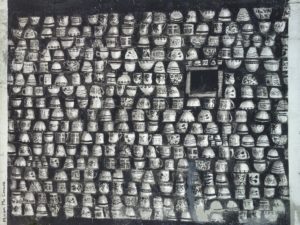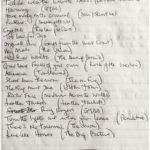Archives: März 2017
2017 22 Mrz
Robert Foster: One more coffee and I go
Lajla Nizinski | Filed under: Blog | RSS 2.0 | TB | Comments off
2017 22 Mrz
Elton John is 70 (soon). Fifth and final part of my complete discography review – with a personal ending
ijb | Filed under: Blog,Gute Musik | RSS 2.0 | TB | Tags: Elton John 7 Comments
(45) Songs from the West Coast (2001) ****
Finally, a new Elton John studio album! Finally, a new producer – Patrick Leonard instead of standard Chris Thomas, who’d been around for 20 years, way too long. Released on September 11, 2001. I actually bought it at the West Coast, at Tower Records in Hollywood, where Elton lived at the time. No doubt this is his best album in 25 years – since Blue Moves, I’d say. (Others might say since Too Low For Zero, which is just as acceptable.) 16 years later, this verdict still holds up, only The Diving Board surpassing it. Songs from the West Coast is much more than a solid, professional effort like Made in England or The One, and it’s neither an imitation of his 70’s sound and style as many reviewers claimed, but a mature and diverse collection of songs by John and Taupin in their mid-fifties. Only in the latter part, one or two songs could have been left as b-sides.
Standout tracks: Dark Diamond, Birds, The Wasteland, Original Sin.
–
(46) Peachtree Road (2004) ***
Peachtree Road continues where Songs from the West Coast ended – just more respectable, and therefore slightly boring. Elton produced the album himself, which may not have been the best decision. Some fairly good songs, though this time with a few more references to earlier hits and albums. Some of the lesser songs play like they were made for „Wetten dass…?“, though, and the first half is much stronger than the second one, with the overall atmosphere and sound becoming too uniform.
Standout: Porch Swing in Tupelo.
–
(47) Billy Elliot – musical cast recording (2005) *½
Another musical, this time an immensely successful one based on the successful British film. This time it’s a cast recording instead of an all-star album. Does anyone care? I guess not.
–
(48) The Captain & the Kid (2006) ***¾
Conceived as a follow-up to Captain Fantastic and the Brown Dirt Cowboy, a kind-of autobiography, telling the story of Elton’s and Bernie friendship since that previous album. A mature collection of songs, not overly fantastic, but very good. A nice piano album recreating „the old sound“ of the seventies.
Standout tracks: The Captain and the Kid, And the House fell down, The Bridge (finally, a solo piano song).
–
(49) Lestat (2006)
Lestat is another Broadway musical, the first one by Elton and Bernie, based on Anne Rice’s Vampire Chronicles. A cast recording was reported to be finished, produced by Guy Babylon (who played in Elton’s band from 1988 until his untimely death in 2009) and Matt Still (who co-produced The Captain & the Kid). After the show’s closing however, EJ’s management stated „there are no plans to release the recording at the present.“ Since I have not seen the show on Broadway, I have never heard the music and therefore can’t give any opinion about it.
–
(50) The Union (Elton John and Leon Russell, 2010) ****
Leon Russell had been Elton’s idol and influence on the late 1960s and early ’70s, but when Elton noticed Russell and his songs had been forgotten about, he initiated a collaboration album, produced by T Bone Burnett. They composed and recorded 16 new songs, backed by a committed band that includes Marc Ribot and Booker T, among others. Neil Young and Brain Wilson came around to sing on a song each, and Cameron Crowe made a documentary about the recordings.
The Union continues the retrospective line of The Captain & the Kid. It’s a thoroughly enjoyable album with strong performances, sounding very down-to-earth, thanks to Burnett. However, not all of the 16 songs are equally captivating, in particular the second half drags on a bit. (The standard version is 63 minutes, and the deluxe edition is almost 72 minutes, with 16 songs.)
Standout tracks: If it wasn’t for bad, Hey Ahab, Gone to Shiloh (with Neil Young), There’s no tomorrow.
–
(51) Gnomeo and Juliet (2011)
I don’t really know what that is. Never heard it. I believe it’s a mix of (mostly) old and (a couple of) new songs for another animated movie.
–
(52) Good Morning to the Night (Pnau feat. Elton John) **½
Provided with 100% creative freedom, Australian dance pop duo Pnau were invited to produce mash-ups from Elton’s recordings of the 70s. As a matter of fact, the results could have been less respectful, but they sound nice, evoking a very 70s disco feeling. It’s not really good. But it’s also not that bad either. It’s what it is.
–
(53) The Diving Board (2013) ****½
The Diving Board was announced as – at last! – the album to feature only Elton and his piano. Unfortunately, the final album (the release was postponed after its first announcement and re-recordings were executed) is mostly a full band album, save for the opening song and some other sections throughout the 15 tracks, including and two short instrumentals. However, producer T Bone Burnett has helped arrange the songs and a third instrumental in a cautious and unpretentious way; the piano is always in focus of the songs, and 2 cellos, bass (Raphael Saadiq), drums, and, on a few occasions, a choir or a horn section, have usually been mixed in a supportive manner.
It’s furthermore notable that there are no pop songs intended to stand out, no hits, with the album having been conceived as a mature late work, in parts melancholic, in parts joyful, with the odd wink to the past (Can’t stay alone tonight strongly references I guess that’s why they call it the Blues). An arresting album of immensely inspired songwriting. The closing title track is arguably one of Elton’s best compositions ever.
Standout tracks: The Diving Board, Ocean’s Away, The Ballad of Blind Tom, Oscar Wilde gets out.
–
(54) Wonderful Crazy Night (2016) ***
Another T Bone Burnett production. Unfortunately, after The Diving Board, this is a disappointment. After three rather somber and introspective studio albums, Wonderful Crazy Night was announced as a return to the colorful and extrovert sound and performance of the 1970’s albums, which is why it’s the first album with the usual live band since The Captain & the Kid. A pity there are hardly any memorable songs on this one. Painting by numbers. And the cover art is just awful and as tasteless as it could possibly get.
Standout songs: The Open Chord, In the Name of you, I’ve got two Wings.
–
(55) Deep Cuts (2016/2017) ****/*****
So, after you have read through all of this, here is something else I prepared for you: A year ago, around the release of Wonderful Crazy Night, Elton created a Spotify playlist with 20 „Deep Cuts“, i.e. non-hits from his back catalogue:
It’s a nice and interesting selection, of which I made a playlist of for my iTunes. Having taken a look at it again after I finished this 5-part blog entry, I am not surprised to see several of my „standout track“ choices in this list (My Father’s Gun, Have Mercy on the Criminal, Amoreena, Razor Face, The King must die, even the very unusual choice Too Low for Zero in addition to Crystal, about both of which I assume none of you co-manafonistas would like). I am rather surprised about the inclusion of a few not-great tracks, such as Leather Jackets, Live Like Horses, Shoot down the Moon and Restless. For all those among you who would like to listen to the 20-track collection, I’ve put the iTunes playlist into my Dropbox for you to download. You’ll find a link in the comments. [Non-commercial offer, for private use.]
But, as I don’t really agree with this selection (I think it is, in parts, a missed opportunity) and would like to present a much better one, I have created my very own Deep Cuts collection for you, as a 70th birthday present. I don’t assume you’ll like all of those songs, but I can promise you that anyone with open ears and a love for accomplished songwriting and arrangements will find more some of these choices worth listening to – and will hopefully enjoy as much as possible in this playlist. I’d make a bet that everyone of you will find surprising things in there. Even though it was tough, I forced myself to keep the playlist run under two hours. The first half is more straightforward, whereas the latter part includes a few peculiar choices. I’ll add a download link to this selection as well. Enjoy! (NB: Only two or three of my selected songs overlap with Sir Elton’s own Deep Cuts playlist.)
I just found a readers‘ poll in Rolling Stone (from 2015) which offers ten „deep cuts“ and adds some interesting background information about several of the songs in these two playlists.
–
Ray Davies has a knighthood in his pocket. But „Americana“ shows a man still writing to find out his place in the world. He’s seen it all, he’s seen through it all, but there’s still open road ahead. And there’s no better adventure than that.
(The last sentences of Victoria Segal’s „album of the month“-review in the May edition of „Mojo“)
Die Sprache reicht zur Verständigung nicht aus.
Maria Callas höre ich gerne an verregneten Sonntagmorgen, wenn die Sternstunde der Philosophie wegen der Themenwoche ins Wasser fällt. DIE Callas verspricht Drama und Tragödie, sie ist die von Richard Wagner modellierte Sãngerin für seine Opern. Ihr Stimme ist hart wie Hera, Maria mochte sie selber nicht besonders. Mit ähnlich faszinierendem, antiwarmem Timbre sang Maria Farantouri, als ich vor ein paar Jahren in ihrem Konzert in Athen war. Diese beiden Divas sind von einer unnahbaren Entrücktheit, die bei mir Ehrfurcht auslöst.
Hier in Paphos erlebe ich in den lokalen Clubs meist sehr talentierte Bouzouki Spieler, die meist Sängerinnen im Rembetiko style begleiten. Auf die Dauer wirkt diese Musik auf mich etwas eintönig, vergleichbar einfallslos wie das Essen hier.
Gestern Abend war allerdings ein hoch diffiziles, dramatisches Tanzgeschehen auf dem Town Hall Square. Zu allen möglichen Musikgenres wurden exzellente Tänze aufgeführt. Ich konnte mit mehreren Zyprioten ins Gespräch kommen. Und alle antworteten auf meine Frage, wer ihr Lieblingssänger sei mit: Pantelis Pantelidis. Ich hörte mir auf youtube das Stück „Ginete“ an. In der Pubertät wäre ich ihm verfallen und hätte tief geschluchzt. Er ist mit nur 32 Jahren vor einem Jahr bei einem Autocrash ums Leben gekommen. Einige nannten Remos Antonio und Chatrigianis. Ich habe diese beiden Musiker nicht im Netz gesucht, aber eine zypriotische Sängerin, die in Paris lebt und hier als Gast auftreten wird. Ihre Stimme ist sensual wie velvet, ihre Feelings weich wie Feigen. Sie heisst Vakia Stavrou. Für mich ist sie eine schöne Entdeckung.
Natürlich muss hier Eleni Karaindrou genannt werden. Meist lief auf meinem Tablet ihr für den Film Ulysses Gaze komponierter Soundtrack: Ulysses. Ein klarer Klang wie die Luft im Trodoosgebirge.
Ein Jungferngrauenerlebnis hatte ich in einer englischen Bar mit Karaoke. Die Engländer besetzen die Küstenstreifen immer noch und liefern sich an den noch kühlen Abenden diese Singerwettstreits. Deep Purple, U2 und Dannyboy waren die Hits. Als ich aufgefordert wurde, auch mal zu singen, winkte ich scheu ab. Später dachte ich nach, was ich gesungen hätte:
Day in my life / Beatles
Don’t forget to dance / Kinks
Und Ihr?
1
2
3
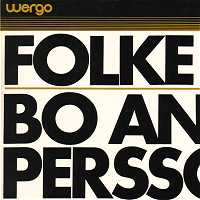
FOLKE RABE, Was??
Musik ohne Rhythmus, ohne Melodie und Harmonik
Klang, nur allmählich changierend
wie Reflection ein Member von Game Of Drones
schon 1967 entstanden
Folke Rabe (*1935):
Bereits vor vielen Jahren begann ich mich für die Zusammensetzung verschiedener Schallphänomene zu interessieren. Die physikalischen Grundvoraussetzungen waren mir bekannt; doch ich wollte die Bestandteile des Schalls mit meinem Gehör erleben. Ich versuchte, in die verschiedenen Klänge hineinzuhören, um die Komponenten zu erfassen, aus denen sie zusammengesetzt waren. Ich erlebte, wie die Obertöne in einem Klavierton sich langsam verändern, indem sie verklingen. Ich versuchte auch, soweit dies möglich war, die komplizierten Abläufe herauszuhören, die bei der Entstehung eines Schalles vorkommen. Gleichzeitig mit diesem Horchen beschäftigte ich mich mit Monotonie.[…]
In den abendländischen Kompositionen sind Intervalle, Rhythmen, Klangfarben, soweit sie sich der Notenschrift entzogen, zu untergeordneten Teilen einer philosophischen oder zumindest einer motivisch-formalen Idee geworden. Die klingende Tatsache an sich ist mehr in den Hintergrund getreten, und das Abendland hat in ethno-zentrischer Selbstvergötzung die Überlegenheit seiner kulturellen Tradition statuiert (sei es bei Beethoven oder bei Coca-Cola).
Doch es gibt in der Welt viele musikalische Bereiche, in denen das Qualitative aus dem direkten Klang wächst. In solcher Musik wird man Formenelemente im westlichen Sinne vergebens suchen und deshalb diese Musik als primitiv, sinnlos oder gar provokant empfinden. In Wahrheit aber handelt es sich um zwei verschiedene Möglichkeiten einer musikalischen Gestaltung.(aus dem Beiheft zu WERGO 60047)
4
brandneu
Alary und Rabe, offenbar Geistesverwandte
For me the texture of sound is as evocative as a strong melody or harmonic progression. I also love to blur the boundaries between the geography of instruments and music genre.
(Alary, zitiert nach Fatcat Records Ltd)
5
2017 20 Mrz
Reflections on „Reflection“ (reappearance, no remix)
Michael Engelbrecht | Filed under: Blog | RSS 2.0 | TB | Tags: Brian Eno, Reflection, review, Warp Records Comments off
I built myself a metal shakuhachi. You will have to wait a bit, dear reader, for the return of this instrument. What am I doing just now, aside from listening, on various levels, to Brian Eno’s new piece of Thinking Music? Well, thinking, and stretching the now – ordering a Jack London novel, daydreaming about my next travel to the Northwestern Highlands. A grey day today. I’m not experienced in synaesthesia, but the slowly rolling tones of „Reflection“ add an unspeakable colour (of the mind) that makes the grey catchy in a non-catchy way. Drifting. Returning. There’s, from time to time, a whistling, a kind of whistling, but, probably, it’s no real or treated whistling. What kind of landscape does this music breathe?
Mhm. An early-morning-Emil-Nolde-coast-vibe. A memory of myself standing on the cliffs of Dunnet Head at the beginning of 2016. No colours exploding on this new album of, say it with a smile, „Modern Mood Music“: once upon a time, the great British music writer Richard Williams just used this expression as headline for his Melody Maker review of Brian Eno’s „Music for Films“, Weather Report’s „Mr. Gone“ and Jan Garbarek’s „Places“ (one of the best Garbarek albums, by the way). Nice reframing for the old use of „mood music“ from Muzak to Martin Denny’s Martini-Rosso-Exotica.
Wait a minute, „Reflection“ just draws me in again. Later on I will look for my exotic birds, darken the room, light an African candle (they are called „Swaazi“), put „The Jungle Book“ on the screen – bongos in the bush of ghosts. I divert. The Nolde-coast metaphor is just an imagination, nothing to be taken too seriously. I remember, an orange grove in Morocco inspired one of Eno’s other thinking pieces, „Neroli“. The place, the smell, the heat, it all might have added up to or informed some free floating tones, an unheard vibration – unfolding within another long stretch of the now.
London in summertime (long ago), a paper and pencil-shop, I’m looking for some postcards, suddenly I see a smart and beautiful looking woman, immediately ready to having a word with her, such as „Would you lead me through the streets of London?“ I’m just thinking of a somehow more prosaic first phrase, when I hear my name being called from the back of the shop: „Michael.“ It’s Brian, his old studio has been just around the corner, and we have an appointment for an interview on „Neroli“ later in the morning. So, within seconds, one of my favourite musicians and a dream girl in the same room, I was a bit confused, I explained (no kidding, but with all brevity required!) the complex situation to Brian, he apologized for interrupting me, I say, nevermind, how could you know, turned around again, she was gone. Like an apparition.
When you listen to „Reflection“, apparitions, memories, ideas, pictures, feelings, thinking (sideways), it all may come up, along with some really „deep listening“ (the term coined by the late composer Pauline Oliveiros, who really had a knack for the long lasting drones and uncompromised moods) engaging the left and the right field of your brain. Free floating trance. „I want to be the wandering sailor / We’re silhouettes by the light of the moon / I sit playing solitaire by the window…“
The old impact of asynchronism and generative processes in music: you always hear something different, though the components stay the same, or, nearly the same. Steve Reich was the pioneer, with „It’s Gonna Rain“, and some other tape pieces. Brian Eno, always keen on cybernetics, later created „Music for Airports“, and other Ambient classics, with this working method (as small part of the game of creating).
Now „Reflection“ draws me in again, a kind of relaxed magnetism. Sometimes the composition is flooding my living space, sometimes I’m writing at other places, with the music in mind. That’s a difference, cause your memory is never shooting pictures of a track without some mild distortion or nostalgic timbre. Memory is a remix. In the windmills of your mind, certain motives swirl around, prevail, endure, vanish.
The term „old school ambient music“ might arise with first reviews, and, to be honest, this kind of labeling surely deserves a „kick-in-the-ass-treatment“. Compare, f.e., „Neroli“, „Thursday Afternoon“, „Discreet Music“ or „Lux“ – all these musics open up quite (understatement!) different fields of moods and rooms and surroundings (another question is, in a review full of diversions, it’s Thinking Music, isn’t it, why don’t Eno’s ambient works get some well-deserved 5:1-remixes, to make them even more immersive, „Reflection“, at least, will get its generative App for your computer).
So, returning to my kick-in-the-ass-treatment, a term like „old school ambient music“ narrows the focus and totally ignores the diversity, let me be more precise, the extreme diversity of all these slowly evolving compositions. For someone who is more on the „Metallica“ side of sounds, or the „real-music-is-handmade-and-sweating“-approach, this all may be boring stuff, for someone who can at least imagine that thrill-seeker’s paradise might be compatible with the „adagio“ unfolding and exploring of the never everlasting now, every single ambient record might by a seductive invitation into the unknown.
„I built myself a metal shakuhachi.“ What a weird sentence to pop up while listening? Is there anything that sounds like a metal shakuhachi on „Reflection“? Nope, or: dunno. Maybe it’s a metaphor for the music, another label (but ungraspable): „Metal Shakuhachi Music“ – though there’s no metal vibe and no Japanese bamboo flute artifact. But even more so there’s a melting of the electronic/systemic and the soulful/organic. Left with uncertainties can be a gift – like not being trapped in old school knowledge can be a gift. Just, well, surrender. It even works on old, new vinyl.
Dear Micha
many thanks for that very interesting and inspired review. I really enjoyed reading it – and I hope other people can find some of the same depth in it that you’ve found. I deliberately downplay the musical qualities of these long ambient pieces because I prefer people to regard them as ‚functional‘ – and then to discover (if they want to, if they’re able to, if they need to) that they are really music. It’s a nice surprise for them then.. have a lovely christmas wherever you are. I shall be in Italy, probably sleeping. It’s been a busy year…
XXB
London, Dec. 18th
Fiction
Today I was hanging out with ghosts watching ghost football in a stadium overgrown, whose greenkeeper has probably not been seen since ’67. Ghost pies, ghost Bovril, ghost match. Back of the spectre net.
Non-fiction
Today (after I was done with the ghosts) I heard Olivier Alary’s wonderful Fiction / Non-Fiction. I have no idea how I found it, or indeed who Olivier Alary is, but this was the record my ears needed. Lately I’ve been listening to bits of Trance Frendz by Ólafur Arnalds and Nils Frahm as well as Brian Eno’s otherworldly Reflection, maybe they primed the brain for this. Listening to it is like stepping into a dream. No point in looking for meaning here or using adjectives or finding comparisons. This will be on the 2017 list for real. Lifer? Too soon to tell.
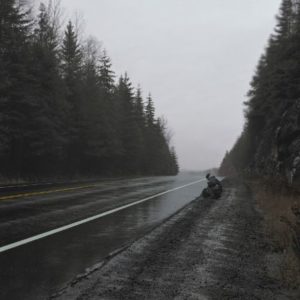
More here: 130701.com/release/fiction-non-fiction/
2017 18 Mrz
[AT02] Asmus Tietchens: Nachtstücke
Jan Reetze | Filed under: Blog | RSS 2.0 | TB | Tags: Asmus Tietchens 3 Comments
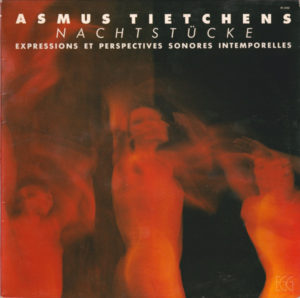
Die französische Plattenfirma Barclay hatte Peter Baumann (von Tangerine Dream) und seiner Firma Paragon Productions 1978 den Auftrag erteilt, für ihr Sublabel Egg drei deutsche Elektronik-Acts zu produzieren. Asmus Tietchens‘ Album Nachtstücke wurde eines davon.
Es war wohl nicht ganz das, was sich die Franzosen vorgestellt hatten. So zog sich die Veröffentlichung der Platte bis 1980 hin, und die Auflage war mit 800 Stück auch eher zurückhaltend kalkuliert. Die Musik war die Quintessenz der völlig freien Basteleien mit einem Moog Sonic Six und einem Minimoog, die Tietchens in den Jahren davor ohne jede Veröffentlichungsabsicht eingespielt hatte.
Nachtstücke ist Asmus Tietchens‘ erste Soloplatte (vorher hatte er bereits an Cluster & Eno von 1977 und Liliental von 1978 mitgewirkt, die gesondert zu besprechen sein werden). Die Klänge stammen vom Moog Sonic Six, irgendwo meine ich auch ein Mellotron herauszuhören. Ein noch recht unentschlossenes Werk, das ein wenig verloren in der Landschaft steht. Klanglich sind die neun Stücke recht unauffällig gehalten; eher sind sie Versuche, mit einfachen Melodien zu spielen, die auf zum Teil recht grimmige Hintergründe gepappt sind. Damit ist Nachtstücke auch ein Vorläufer der vier zwischen 1981 und 1983 bei Sky erschienenen Platten, die dann fast so etwas wie eine eigenständige Werkgruppe bilden werden. Eine vergleichbar melodienorientierte Vorgehensweise taucht dann erst Ende der 80er wieder auf, als Tietchens den Fairlight entdeckte.
Einige Stücke sind von der Plattenfirma eigenmächtig gekürzt worden, das Cover ist nicht mit Tietchens abgesprochen. Auch mit Peter Baumann hat es keine weitere Zusammenarbeit mehr gegeben.
Asmus Tietchens: Nachtstücke
Barclay/Egg 91.040 (1980)
Re-release in der von Tietchens ursprünglich beabsichtigten Fassung mit vier Bonustracks auf Die Stadt DS 55 (2003)
2017 18 Mrz
Wen die Götter lieben, den lieben sie ganz.
Lajla Nizinski | Filed under: Blog | RSS 2.0 | TB | Comments off
Er lag mit seinem Adoniskörper in der Badewanne und hörte Scott Walker. Plötzlich riss sie die Tür auf und schrie: „Das tönt ja schlimmer als die Sirenen!“ Sofort tauchte er weg zu verlockenderen Stimmen. Er stellte sich vor, wie Aphrodite gerade ihre Scham mit Feigen bedeckte. Er würde seiner Haussirene bald die Flügel stutzen. Er sah den Erotikengel vorbeischweben und sah zu, wie Aphrodite ihre Sirenen in Vögel mit hübschen Köpfen verwandelte. Wie betörend ihr sanfter Gesang! Er tauchte kurz auf, um Luft zu holen. Da stand seine Nixe in ophiolith-grüner Haut und dunklen peridotiten Flecken im Gesicht. Schnell griff er nach dem Wachs und stopfte es in seine Ohren. Er sah noch, wie sich ihr Mund in tektonischen Rhythmen bewegte, Lava schien auf das Kissen des Badehockers zu fließen. Dann tauchte er schnell in seine sedimentale Tiefsee, um sich von seinen Sirenen verführen zu lassen. Welch Schreck ereilte ihn, als seine Vögel mit Bart und leierndem Gesang erschienen. Als er auftauchte war sie weg. Er fühlte sich wie Odysseus. Sie würde für immer an ihm gescheitert sein. Er genoss die Stille, in die Scott Walker das Ende von „RUN“ sang.
